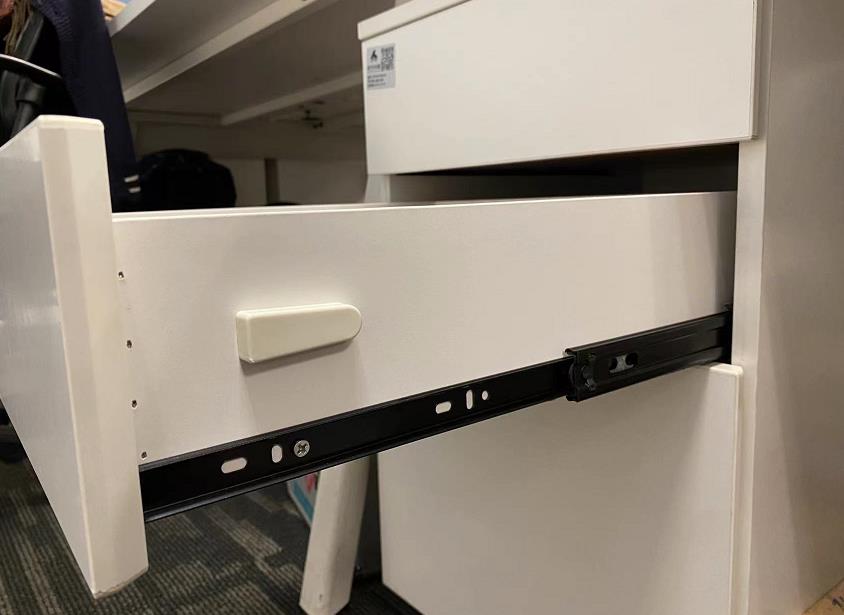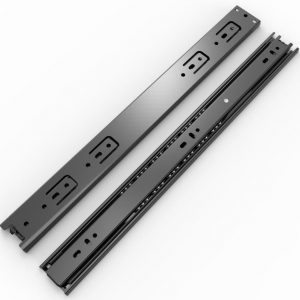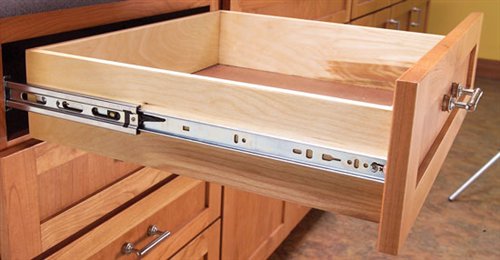How to Make Sure Drawer Slides Work Smoothly
Drawers are not to be envied – they are abruptly pull-out and pushed in (sometimes with all the foolishness). Sooner or later, they do not stand such an attitude and show their dissatisfaction in the form of cracks, worn-out guides, broken side walls, falling backstops, etc. Don’t worry, these problems are common. It is possible to restore their location and functionality only by troubleshooting drawer slides.
 Preparation
Preparation
Examine the drawer and answer the following questions:
- Does this drawer really need repairs?
- If so, how are its guides and sliding surfaces arranged?
You will answer these questions when you do the following:
- Check the strength and rigidity of the drawers and how securely the guides are fastened.
- Determine with a plumb line or level if it is askew. If there is one, find out the reason. Then disassemble the furniture, eliminate the cause of the skew, and reassemble it. The presence of a skew wears out the drawers many times faster – it is difficult to push and pull them out.
If the drawer needs to be repaired, disassemble it, clean it from the fungus, seal the cracks and holes made by insects. So let’s start troubleshooting drawer slides now.
Elimination of minor faults
Most often problems with drawers are in their lower part. The bottom (usually made of plywood) decreases over time, which creates a gap where small objects fall. Experienced furniture makers know this, therefore they put the bottom with a margin (the excess is hidden in the back of the box). Thanks to this, you can eliminate the gap like this:
- Pull out the nails that secure the bottom.
- Pull the bottom forward and insert it into the grooves of the front (make sure that there is no gap in the back) hammer in nails.
- If the bottom is made strictly in size, cut out another one, or put a wooden spacer.
Drawer disassembly instructions
Determine how the drawer parts are connected. If in the “thorn-groove” method, then insert a wedge into the connection and gently knock on it with a hammer until the parts open. When all parts are severed, remove the remaining glue by brushing the surface with a brush dipped in hot water. Make sure it is dry when you assemble the drawer. Use only glue recommended by the manufacturer when assembling.
It is better not to use nails to connect parts. The fact is that over time, the wood deforms, which is why the caps of the nails will protrude outward and damage the guides.
Instructions for the restoration of the side walls
Sidewalls most often suffer from chips and cracks. If it is a chip, then glue the chipped part with PVA glue. To keep the white color of the glue from standing out, tint it with a pumice stone.
If you did not find a chipped piece, then cut the same shape out of wood (if necessary, you can process the chip with a hacksaw, so that it is easier to cut a piece of wood under it and it stuck more firmly) and glue it.
Either completely detach and glue the cracked parts by inserting bamboo spikes, or pull them apart as much as possible, apply glue, and tighten with clamps.
The drawer does not slide out well, the guides are jammed
If you do not know how to make drawers glide smoothly, first check out both deformations and the fittings themselves. If the manufacturer “saved” on guides and supplied Chinese counterparts with a thin metal, it is unlikely that the fittings were originally designed for a full load of the drawer. Therefore, it cannot provide the expected smoothness of closing and opening of the drawer.
Troubleshooting drawer slides
It happens that the guides quickly fail because the box is large and heavily loaded. Telescopic (ball) guides can be installed in two rows. At the same time, the drawer will be endowed with a greater load-bearing capacity and will last longer.
With such an “upgrade” it is quite possible to replace the bottom made of flexible fiberboard with chipboard or plywood in order to store tools in such a drawer.
It is better, of course, to replace the metal guides. They are not that expensive. However, if, upon visual inspection, the rollers are intact, have an even shape, and only the metal of the runners is bent, you can try to return it to its original shape. To do this, use a vice, pliers, and other hand tools.


 Preparation
Preparation